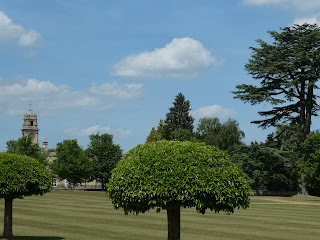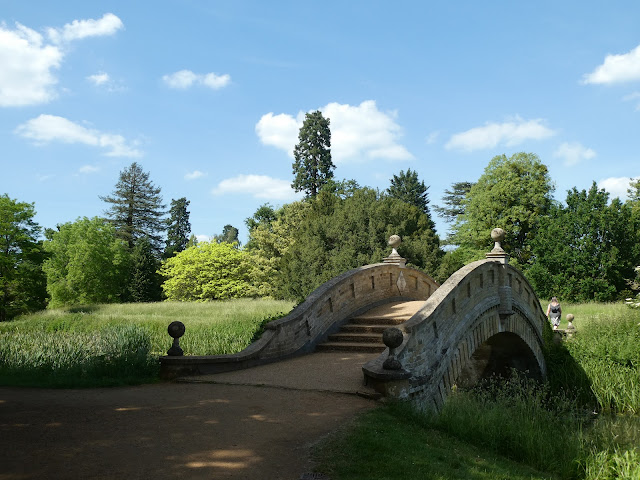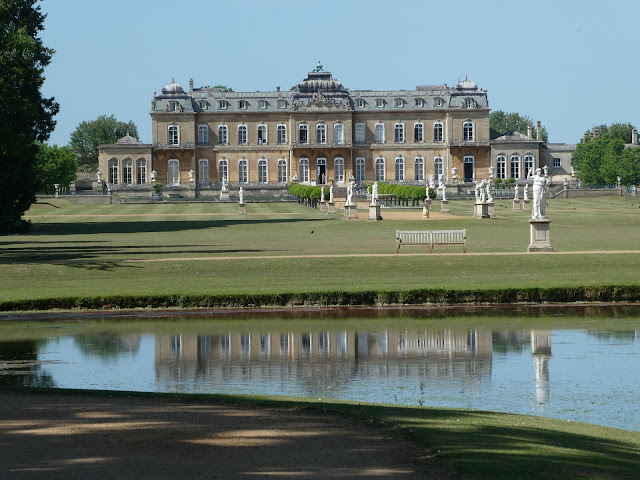I don't know why Wrest Park isn't better known. Then again, it is the other side of Luton and that probably explains it. The area is hardly a renowned beauty spot, nor a tourist destination. Luton is almost the only town in the south east that never features in the property supplements as a possible commuter town for London. And given that it has a good train service, that tells you a lot. It is a truly dreadful place to live. (And once I did!)
Wrest Park is basically an 18th century landscaped garden. There is a house too, in the design of an 18th century French chateau, but all its contents were sold in 1917 and it had suffered a fire, plus a long spell as home of the National Institute of Agricultural Engineering. So while you can see part of the interior, it has lost its finest features. Leaving the grounds to offer the most pleasure. They are extensive and varied. Just a great place for a day out of ambling about.
The Rose Garden, with a 19th century fountain base of four marble mermaids (but no fountain).
As I say, there is a fine house
The Orangery, temporarily closed as they were filming something there.
The Bowling Green House

Another statue of a Molossian Hound - just like the ones that guard Victoria Park (see previous entry)
The Pavilion, designed by Thomas Archer, a pupil of Christopher Wren, who also built the impressive St Paul's Church in Deptford (see my Deptford entry!), dates from around 1710 and so well predates the current house. It was built for the original house and survived the house's demolition and relocation further away. It is just a pleasure pavilion, somewhere to sit and have tea. A summerhouse.

View back to the house
East Half House. The eastern side of the gardens is covered in mature trees, but with lots of viewpoints and paths leading to odd bits of statuary. All very pleasing
Capability Brown column, commemorating his redesign of the gardens in the 1750s. Landscape gardeners do not come any more prestigious, so you would want to mark the occasion!
Five Graeco-Roman altars in a circle
The gardens' most striking feature is the Long Water, a canal from the late 17th century, right up the middle, like a mini Versailles although apparently inspired by Hampton Court. The Pavilion is at one end and the House at the other.
Statue of King William III. One rare survivor of a lot of lead statues that were originally in the gardens. Unfortunately, in harder times for the family, the rest were melted down for roof repairs to the house!
The French Parterre in front of the house.
The American Garden
The interior has been restored to a degree and is very beautiful. But, for example, the "paintings" on the walls below are just photos of originals.
The Petit Trianon, a 19th century wooden cottage - sort of a folly, thought to add a picturesque rustic look.
Atlas
The Chinese Temple. No landscaped garden is complete without a bit of chinoiserie.
The Chinese Bridge


























































































































No comments:
Post a Comment